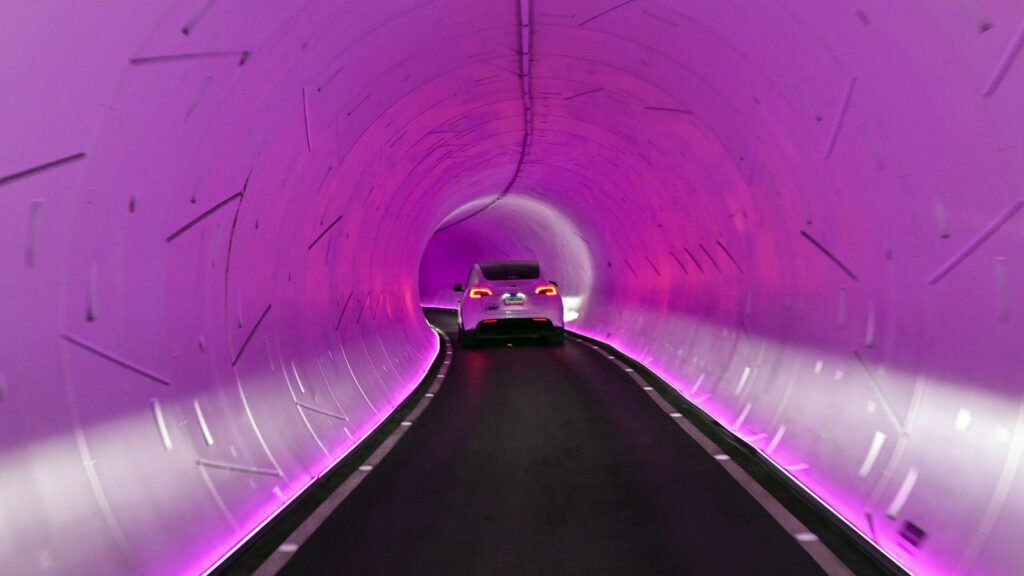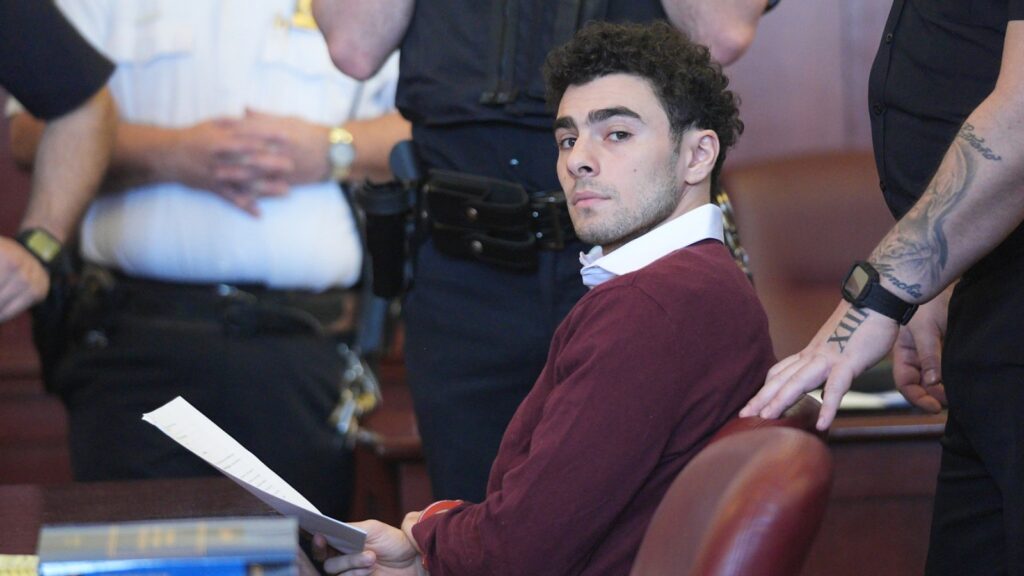Deeper Underground: 2024 Is the Year of the Tunnel
Suddenly, the ground beneath our feet doesn’t feel so solid.
That’s because as 2024 kicked off, the topic of tunnels began to come up again and again. They can be dangerous or just baffling, their scale often impressive (and sometimes disputed). A few remain works in progress: TikToker @engineer.everything, nicknamed “TikTok tunnel girl,” confirmed to media last month that city officials in her Virginia town halted a digging project underneath her home, which had gone viral on the platform since she began documenting it in 2022. Kala, as she’s also known, is now seeking a permit to continue expanding her suburban cave system, which currently includes a chamber “22 feet below ground,” she told the New York Times.
The municipal battle over Kala’s hobbyist tunneling is, you could say, a microcosm of the broader angst about tunnels at this moment. Wherever they appear — and it truly does feel that they are multiplying at a fantastic rate, branching out in our imagination as well as in the dirt — they are politicized, polarizing. Any given tunnel can ignite a fierce ideological passion.
Perhaps the foremost example is the system of fortified tunnels built under the Gaza Strip by Hamas militants. Following the group’s Oct. 7 surprise attack on Israel, Prime Minister Benjamin Netanyahu’s government and the IDF have used these hidden networks to justify the bombardment of civilian targets including hospitals and a university. Yet debate has raged over the extent, sophistication, and exact locations of these tunnels, which, although they certainly exist, have been the subject of conflicting accounts and rampant misinformation — some of it from the Israeli armed forces themselves. Most recently, a CNN investigation this week found no evidence to support the IDF’s claim that it had leveled a cemetery in Gaza because of a tunnel shaft leading from the area into an “underground command center” for Hamas.
That the Hamas tunnels had become a tacit metaphor of the competing narratives around Israel’s siege on Gaza was all the more obvious when a brawl among Hasidic Jews broke out half a world away, at the Chabad Lubavitch World Headquarters in the Crown Heights neighborhood of Brooklyn. The Jan. 8 incident was precipitated by a long-running feud between the Chabad Lubavitch community and a breakaway sect that believes a late former leader of the movement is the messiah. Chabad has had legal control of the building for nearly two decades, but members of the latter faction had excavated a passageway under the synagogue to gain illegal access. When Chabad attempted to vacate the building in order to fill in the tunnels, a protest broke out, with nine participants arrested in the melee.
The odd bit of local news metastasized in part because of the heated commentary on Hamas tunnels, ultimately spawning too many antisemitic conspiracy theories to count: extremists misrepresented the passage as a huge network of tunnels and falsely suggested that Jews used this alleged lair for everything from human trafficking to child sacrifice. At a time of rising hate speech across the internet, secret tunnels were all at once a convenient talking point for every side.
Of course, tunnels have prominently figured in conspiracist propaganda before — and the trope seems to have reemerged during the last two presidential election cycles. In 2016, a gunman arrived at Washington, D.C. pizzeria Comet Ping Pong and fired several shots from an AR-15-style rifle, thankfully injuring no one. He was attempting to investigate the false premise of the Pizzagate conspiracy theory, which held that Hillary Clinton and other prominent Democrats ran a child sex-trafficking ring out of the basement of the restaurant, supposedly connected by a series of tunnels to other local businesses. (The shooter was ultimately sentenced to four years in prison.)
Interest in the specifics of Pizzagate waned in the next few years as the far-right QAnon conspiracist cult supplanted the theory and significantly broadened its scope. By 2020, QAnon believers were spreading falsehoods about military operations to rescue “mole children” caged and tortured in tunnels under New York’s Central Park and the Getty Museum in Los Angeles. Adherents have also claimed that the so-called “deep state” holds children in deep underground military bases, or DUMBs.
While the substance of these claims is absurd, they make thematic sense: paranoid right-wingers who subscribe to such fringe concepts regard them as a kind of sublimated or subconscious truth that can be revealed to others as they “awaken” from consensus reality. When there’s no visible evidence of what you’re talking about, why not picture an elaborate underground setting for it? Only those who have gone down the rabbit hole, so to speak, can see what lies below the surface of things as they appear.
Not to mention that tunnel panic offers the chance to dehumanize your enemy as duplicitous, vermin-like, cloaked in shadow as they concoct nefarious schemes. Last month, conservatives seized on a story concerning massive living spaces that unhoused people had carved into the banks of the Tuolumne River in Modesto, California, “full of trash and drugs,” as the New York Post reported in scandalized tones. Rather than sympathize with the plight of individuals pushed to the edges of society, many folded this coverage into familiar partisan rhetoric accusing blue states of a permissive or encouraging attitude toward homeless encampments — a phenomenon they also sought to blame on Biden‘s purportedly lax border policy.
In our polarized world, the boundary of earth is the perfect dividing line between whomever you want to portray as evil and your own virtuous in-group. Below, like the Morlocks of H.G. Wells’ The Time Machine, are the hunched, burrowing monsters that threaten upstanding folks walking freely above them in pure daylight. The uncanny thing about these past several weeks is how literal that division has grown with each subsequent tunnel exposé.
Where the saga will take us next, no one can say for certain — though political lightning rod Elon Musk may be pointing the way. It’s true that Hyperloop One, a Richard Branson-backed tech company built off Musk’s sci-fi pitch for vacuum tunnels that could theoretically hurl a passenger pod from Los Angeles to San Francisco in half an hour, shut down in December after failing to secure a single construction contract, and the prototype it built near SpaceX headquarters has been turned into a parking lot. But Musk’s own Boring Company, despite abandoning most projects and facing further problems, is now looking to expand a short tunnel system that presently connects two ends of the Las Vegas Convention Center with a subterranean track allowing Tesla chauffeurs to ferry riders back and forth.
And if Musk’s team rooting around under Sin City can’t advance this strange year of the tunnel, what will? Go ahead and grab a shovel, because we’re just getting started.





